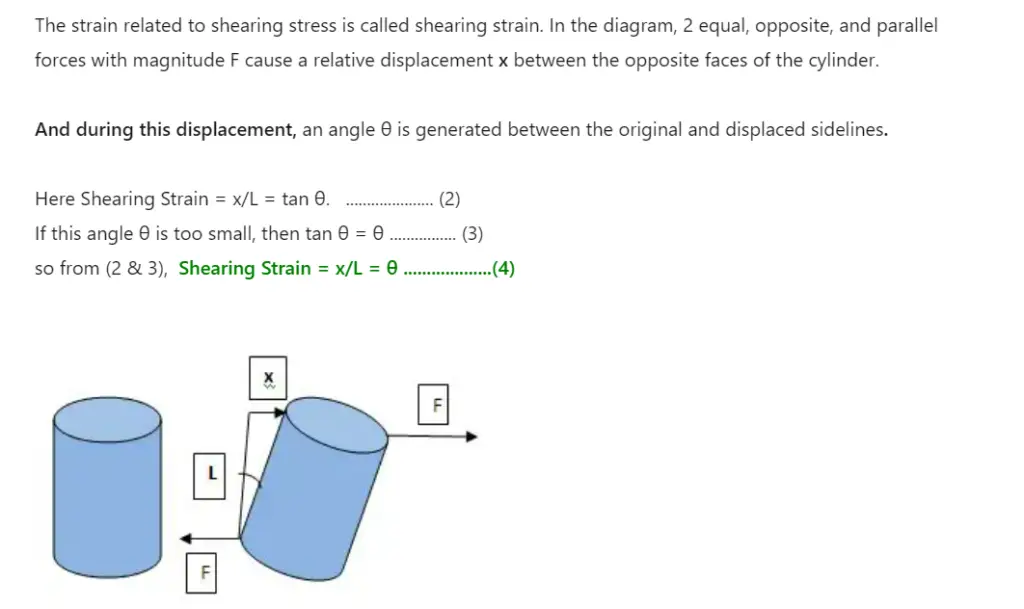Strain in physics
Definition of strain
Definition of Strain: Strain is the measure of how much an object is stretched or deformed due to the stress applied to it.
Types of Strain in Physics
A solid may change its dimensions in 3 different ways, resulting in 3 types of strain: (1) Longitudinal strain (2) Shearing strain, and (3) Volume strain
Longitudinal strain
Forces are applied at a right angle to the cross-sectional area or surfaces to either elongate or compress the object. These forces tend to cause a change in the length of the solid body and generate Longitudinal Stress.
The strain of a body as a result of Longitudinal Stress applied to it is called Longitudinal Strain.
Say the original length of the body is L and the change in length is l.
Here comes the term Longitudinal Strain which is stated as the change in length per unit length.
Longitudinal Strain = l/L……………………..(1)
Shearing strain
If two equal and opposite deforming forces are applied parallel to the cross-sectional area of a cylinder-like object then a relative displacement between the opposite faces of the cylinder appears. Then the restoring force in the object generates a shearing stress. The strain of the body due to this Shearing Stress is called Shearing Strain.

Shearing Strain = x/L = θ
Volume strain
Hydraulic Compression on solid leads to a decrease in its volume. The internal restoring force of the solid causes Hydraulic stress.
The strain caused by hydraulic stress is called volume strain which is the ratio of change in volume and initial volume.
Volume Strain = Δv / V …………………. (5)
Strain Formulas
Longitudinal Strain = l/L
Shearing Strain = x/L = θ
Volume Strain = Δv / V

